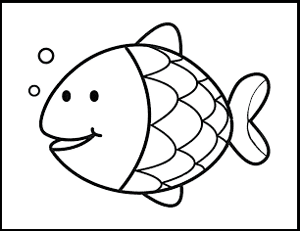Carassius auratus
Identification Tips:
• Wild specimens olive brown, olive green, with a bronze sheen, silvery, grayish or yellowish
• Very large scales
• Upper jaw does not reach eye
• Dorsal fin: 3 - 4 spiny raysand 14 - 20 soft rays
• Anal fin: 2 - 3 spiny rays and 4 - 7 soft rays
• Caudal fin:17-19 rays
• Commonly confused with juvenile Carp; Carp have 2 barbels at each corner of the mouth. Goldfish have none.
Conservation Status:
| British Columbia | Canada | Natureserve | |
| COSEWIC | Species at Risk Act | ||
| Introduced Species | Not Assessed | None | G5 |
Information Source: BC Conservation Data Centre: http://a100.gov.bc.ca/pub/eswp/
Life History:
• Introduced species
Habitat:
• Typically found in small lakes, ponds, or sluggish sloughs in parks, golf courses and urban areas.
• Usually associated with dense vegetation
• Highly tolerant of low dissolved oxygen and high water temperatures.
• Require water of 15–25ºC to breed, which limits where populations can establish in BC
Range:
British Columbia
• Introduced to Fraser Valley, Shushwap Lake.
Global
• Native to central Asia and China, and Japan.
• Introduced world wide.
Comments:
• An aquarium fish commonly released into the wild,
• Characteristic orange colour of aquarium strains is lost within a few generations.
• May hybridize with carp
––––––
Primary Information Source:
McPhail, J.D. 2007. The Freshwater Fishes of British Columbia. University of Alberta Press. Edmonton, Alberta.

